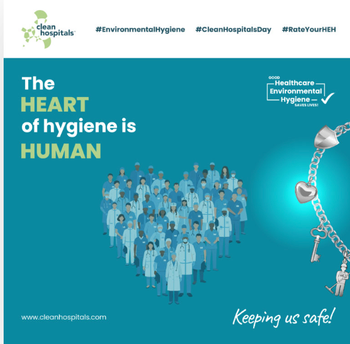
Revolutionary Antibiotic-Resistant Gonorrhea Treatment: A Possible Breakthrough with Recce 327
With gonorrhea's rising antibiotic resistance, Recce 327 by Recce Pharmaceuticals emerges as a game-changer, showing 99% efficacy in preclinical trials and promising potential against antibiotic-resistant bacteria globally.
“Gonorrhea is a common sexually transmitted infection (STI) caused by a bacteria called Neisseria gonorrhoeae (N gonorrhoeae),” according to the
Frequently, gonorrhea may be asymptomatic, leading to the potential unknowing transmission to your partners. Regular testing, in accordance with a health care provider's advice, and practicing safer sex can significantly lower the risk of infection.
On a positive note, to combat the developing resistance to traditional medications in fighting gonorrhea, a novel compound has demonstrated significant success in eliminating infection in an animal model and shows promise as a future therapy.
Recce Pharmaceuticals, an Australia-based pharmaceutical company, has released promising preclinical data on their lead candidate, Recce 327. The study shows that Recce 327 has the potential to be effective in treating gonorrhea infections. In a mouse infection model of gonorrhea, mice treated twice daily for 7 days with Recce 327 showed a 99% reduction in bacterial shedding and burden compared to the placebo group.
Additionally, the preclinical study has shown that Recce 327 is safe and well-tolerated, further supported by a recent phase 1 study. These findings are an important step toward developing a new and effective treatment for gonorrhea infections.
ICT: Can you provide more details about the recent preclinical study evaluating RECCE 327 against N. gonorrhoeae? What were the key findings, and what do these results signify for the future of antibiotic-resistant bacteria treatment?
James Graham, CEO of Recce Pharmaceuticals: Our recent study investigated the ability of our lead anti-infective compound, RECCE 327 (R327), to reduce N gonorrhoeae infection in a mouse model. In this study, groups of 10 mice were vaginally inoculated with the bacteria. R327 was administered twice daily as an intravenous (IV) bolus of 1000 mg/kg for 3 days. The results demonstrated that R327 had a significant bactericidal effect and reduced bacterial shedding by 99% (2-log reduction). By day 5, bacterial shedding had decreased over 99.9% (3-log reduction) compared to the placebo group.
Additionally, the mice receiving R327 showed no clinical signs of gonococcal infection. These results follow suit with a previous preclinical animal model study, demonstrating R327 to have a significant dose-dependent antibacterial effect at 100, 500, and 1000 mg/kg IV doses 7 days post infection. R327 has showcased strong potential as an anti-infective that could not only treat gonorrhea infection but also act quickly on emerging resistant strains of the STI as well. The need for a new class of anti-infectives could not be greater, especially against a lethal pathogen such as N gonorrhoeae. The data from this study, along with the previous findings, emphasize the capability of R327 to demonstrate broad-spectrum activity against antibiotic-resistant bacteria, even with repeated use.
ICT: The World Health Organization recognizes gonorrhea as a significant global public health problem, and the development of antibiotic resistance in gonorrhea is a growing concern. How does RECCE 327's efficacy against N gonorrhoeae address both these critical public health issues, especially given the limitations of current antibiotic treatments?
JG: R327 represents a new class of anti-infectives; whereas previous antimicrobials have been derived from nature, R327 is entirely synthetic. Our preclinical data strongly supports bactericidal activity against not only resistant gonorrhea but also other drug-resistant superbugs, such as the ESKAPE pathogens. The complications of untreated gonorrhea are severe, life-changing, and, in some cases, may lead to death. R327 has the potential to help and improve the outcomes of the millions of patients worldwide with gonorrhea.
ICT: Could you share insights on the safety and tolerability profile of R327 in clinical trials so far? How does this profile support the potential progression to Phase II studies, and what are the next steps in your research and development pipeline?
JG: In 2023, we released data from our Phase 1 clinical trial evaluating the safety and tolerability of R327 in 80 healthy volunteers. R327 was shown to be safe and well tolerated, and volunteers experienced no adverse events at all dose levels (50 mg to 6000 mg), with no clinically significant changes in hematology, organ function, vital signs, or urinalysis observed. These positive results open the door to progressing R327 into Phase 2 studies and building upon its promising preclinical efficacy. We currently have several Phase I/II studies underway in urinary tract infections (UTI) (urosepsis), burn wound infections, and diabetic foot infections, as well as serious and life-threatening infections, including sepsis.
ICT: How does Recce Pharmaceuticals envision the role of R327 in combating this issue on a broader scale, and what is the timeline for potential clinical applications?
JG: We envision an extremely bright future for R327 in treating patients with resistant infections in a way that does not further perpetuate drug resistance. R327 has demonstrated rapid bactericidal activity to all ESKAPE pathogens and multi-drug resistant bacteria. In our studies, the bacteria have not developed resistance to R327, meaning that it is effective and fast working and maintains efficacy after repeated use. For patients where current antibiotics have failed, we can provide a therapeutic that clears the infection and can be counted on in the future. We are continuing to progress our current clinical trials forward and are letting the data guide us to the next steps. We look forward to providing updates on the development of R327 in its current clinical trials across a broad range of therapeutic indications.
ICT: Do you have anything else you’d like to add?
JG: Before the year ended, we were delighted to receive further in-vivo UTI efficacy data from 2 studies conducted at our Anti-Infective Research Unit at Murdoch Children’s Research Institute in Melbourne, Australia. The results showed significant R327 bactericidal activity against Escherichia coli (E. coli) in a rat model via intravenous infusion and a new direct-to-bladder delivery. The first study demonstrated a greater than 99% reduction (greater than 2-log reduction) of E. coli using 500 mg/kg dosing of R327 over a 1-hour infusion to determine the efficacy of R327 treatment in a physiologically relevant rat UTI model. In a second study, R327 demonstrated efficacy against Escherichia coli when injected directly into the bladder. In this study, the dosage of R327 was doubled and administered twice, resulting in a total dose of 2,000mg/kg via direct-to-bladder delivery. Bacterial shedding of E. coli in the urine was measured. A 2-log reduction (approximately 99% bacterial kill) in the direct-to-bladder group was observed compared to the untreated control group. The bacterial burden of E coli in kidney tissue was also analyzed and showed a 2-log (99% kill) reduction in the direct-to-bladder delivery group. Additionally, a statistically significant 3.5-log reduction (greater than 99.9% kill) in E coli bacterial burden was observed in the bladder tissue from the direct-to-bladder delivery group compared to the untreated control group. These results instill confidence in the prospect of advancing R327 to a Phase 2 clinical trial for UTI/Urosepsis.
Newsletter
Stay prepared and protected with Infection Control Today's newsletter, delivering essential updates, best practices, and expert insights for infection preventionists.





